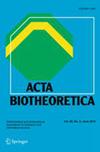The Hybrid Incidence Susceptible-Transmissible-Removed Model for Pandemics
Abstract
The susceptible-transmissible-removed (STR) model is a deterministic compartment model, based on the susceptible-infected-removed (SIR) prototype. The STR replaces 2 SIR assumptions. SIR assumes that the emigration rate (due to death or recovery) is directly proportional to the infected compartment’s size. The STR replaces this assumption with the biologically appropriate assumption that the emigration rate is the same as the immigration rate one infected period ago. This results in a unique delay differential equation epidemic model with the delay equal to the infected period. Hamer’s mass action law for epidemiology is modified to resemble its chemistry precursor—the law of mass action. Constructing the model for an isolated population that exists on a surface bounded by the extent of the population’s movements permits compartment density to replace compartment size. The STR reduces to a SIR model in a timescale that negates the delay—the transmissible timescale. This establishes that the SIR model applies to an isolated population in the disease’s transmissible timescale. Cyclical social interactions will define a rhythmic timescale. It is demonstrated that the geometric mean maps transmissible timescale properties to their rhythmic timescale equivalents. This mapping defines the hybrid incidence (HI). The model validation demonstrates that the HI-STR can be constructed directly from the disease’s transmission dynamics. The basic reproduction number (\({\mathcal{R}}_0\)) is an epidemic impact property. The HI-STR model predicts that \({\mathcal{R}}_0 \propto \root \mathfrak{B} \of {\rho_n}\) where \(\rho_n\) is the population density, and \({\mathfrak{B}}\) is the ratio of time increments in the transmissible- and rhythmic timescales. The model is validated by experimentally verifying the relationship. \({\mathcal{R}}_0\)’s dependence on \(\rho_n\) is demonstrated for droplet-spread SARS in Asian cities, aerosol-spread measles in Europe and non-airborne Ebola in Africa.

 求助内容:
求助内容: 应助结果提醒方式:
应助结果提醒方式:


